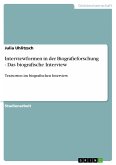Seminar paper from the year 2003 in the subject Sociology - Methodology and Methods, grade: A-77, University of Canterbury (Department of Mass Communication and Journalism), course: COMS 402 New Media And Contemporary Theory, language: English, abstract: Ethnography is the central method of anthropology. Nevertheless, it has often been borrowed and adapted by other disciplines. While there is a central body of methodological texts within anthropology, this is not the case in relation to the use of ethnography outside the discipline and in relation to online fandom in particular. This “absence of a central corpus of methodological texts” (Ruddock 1998, p.297) results in a broad range of diversity in so-called ethnographic writing. Harry F. Wolcott’s struggle (in Van Maanen 1995:92) to decide whether to call his study The Man in the Principal’s Office (1973) ethnographic or not, characterises very clearly the fuzziness and complexity of the method. Even when contemporary ethnographies, such as virtual ethnography, are intended to feature a much narrower focus, some of these difficulties remain. The first ethnographers in the middle of the 19th century were the so-called “armchair-ethnologists.” Often their only sources of information were travelogues of missionaries. They accumulated their information without coming to direct contact with the human beings that were their objects of investigation. The research scientist only evaluated the data. This impersonal, anonymous basic approach resulted in distorted, superficial and extremely notional representations of societies. Around 1918, the “Malinowskian revolution” in ethnography demonstrated an approach of participant observation. The previous segregation between fieldworker and scientist ceased, which resulted in a single person acting as reporter, researcher and analytical scientist. Malinowski suggested that it is important not only to record the actions of the subject of exploration but also to understand the underlying motivations. “Ethnography has changed a lot since its origins as the method anthropologists used to develop an understanding of cultures in distant places” (Hine 2000, p.41). One of the last relics may be the original core approach of travelling to a foreign place and integrating into a community or society with the aim of understanding the actions and underlying motivations of its members. “It (ethnography) refers to a style of research that seeks to describe and interpret a cultural or social group or system, and involves the participation of the ethnographer(s)” (http://staff.bath.ac.uk/psssr/courses/mres ethnography.html). [...]
Bitte wählen Sie Ihr Anliegen aus.
Rechnungen
Retourenschein anfordern
Bestellstatus
Storno









